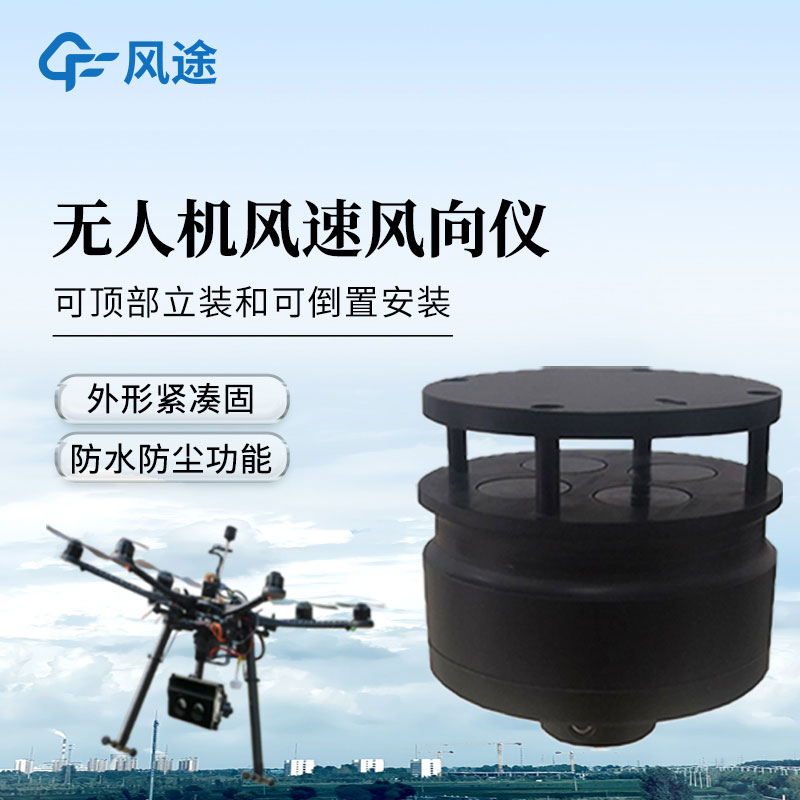Tianyi Sensor IOT Technology Co., Ltd
Sales Manager:Ms. Emily Wang
Cel,Whatsapp,Wechat:+86 15898932201
Email:info@fengtutec.com
Add:No. 155 Optoelectronic Industry Accelerator, Gaoxin District, Weifang, Shandong, China

Sales Manager:Ms. Emily Wang
Cel,Whatsapp,Wechat:+86 15898932201
Email:info@fengtutec.com
Add:No. 155 Optoelectronic Industry Accelerator, Gaoxin District, Weifang, Shandong, China

Model:FT-F2
Brand:tianyi
1.Product Introduction to Weather Sensors for Drones
Weather Sensors for Drones are sensors that drones are equipped with to measure temperature, humidity, wind direction, wind speed, and atmospheric pressure.The F2 Weather Sensors for Drones is a weathermeter that utilizes the principle of ultrasonic resonance.It is specially designed to be installed on small aircraft and on unmanned platforms to monitor wind speed, wind direction, temperature, humidity and atmospheric pressure values in low-altitude areas.
The weight of F2 is 56g and a diameter of 50mm.It is currently a lighter and smaller ultrasonic meteoroscope on the market.It has a compact and solid appearance, and has extremely strong anti-electromagnetic interference, waterproof and dustproof functions.It can work normally at an altitude of 4,000 meters and the external environment between -40℃ and +70℃.
It uses low-power chips internally, and can measure wind up to 60m/s, especially for unmanned aircraft and related flight control platforms, as well as environmental monitoring systems using aircraft.
F2 has two installation methods, which can be mounted on the top of the aircraft and can be mounted upside down on the bottom of the aircraft.
2.Weather Sensors for Drones technical parameters
| name | Measurement range | Accuracy | Resolution |
| Wind speed | 0-60m/s | ±3% | 0.1m/s |
| wind direction | 0-359° | ±3° | 1° |
| temperature | -40-+80℃ | ±1℃ | 0.1℃ |
| humidity | 0-100% | ±5% | 1 |
| Air pressure | 300-1100hpa | ±1 | 0.1hpa |
| Instrument diameter | 50mm | ||
| Instrument height | 50mm | ||
| Instrument weight | 56g | ||
| Digital output | RS485 | ||
| Baud rate | 4800-19200 | ||
| Communication protocol | ModBus, ASCII | ||
| Operating temperature/humidity | -40℃-+70℃; 0-100% | ||
| Working Altitude | 0-4000 meters | ||
| Power requirements | VDC: 5-24V; 28mA | ||
| Installation method | Top column installation or bottom lifting of aircraft | ||
| Material/Color | ABS/Black | ||
Air quality monitoring stations for road traffic primarily aim to conduct real - time monitoring of air quality in traffic - intensive areas. They integrate data from environmental monitoring networks, meteorological parameters, and vehicle - related information. By doing so, these stations analyze...
Negative oxygen ion monitoring stations collect real - time data on negative oxygen ion concentrations in the environment through sensors, and transmit the data to the background for processing and display via communication technologies. The core of this system lies in its precise perception of the...
With the rapid advancement of urbanization, construction sites, road works, and material storage yards are scattered across various corners of cities. During construction and operation, these sites inevitably generate environmental pollutants: dust and noise.A dust detector is an intelligent d...
Ultrasonic Smart Weather Station integrates multi-element monitoring and uses a fully digital design to achieve accurate perception and real-time transmission of environmental data...